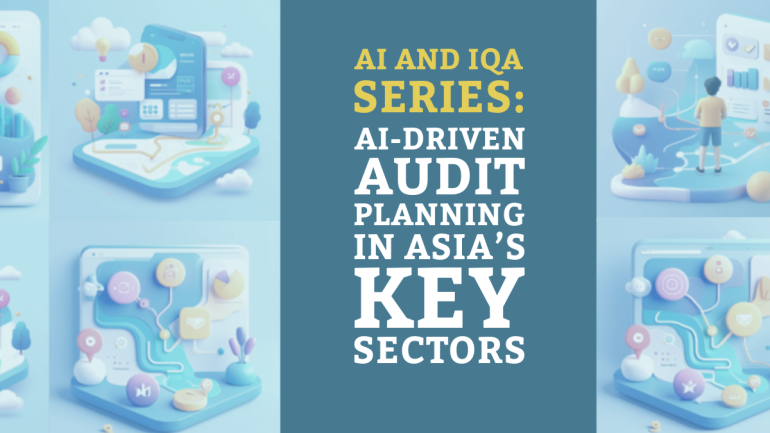This website uses cookies so that we can provide you with the best user experience possible. Cookie information is stored in your browser and performs functions such as recognising you when you return to our website and helping our team to understand which sections of the website you find most interesting and useful.
Table of Contents
TL;DR: Strategic Planning Key to Academic Excellence
- Strategic planning is crucial for achieving academic excellence by setting clear goals and objectives.
- Continuous assessment of the plan and making adjustments as needed are crucial for success.
- Involving stakeholders in the planning process fosters collaboration and ensures buy-in from all parties.
- Resource allocation should be strategic to support the implementation of the plan effectively.
- Monitoring and evaluation of the plan’s progress are necessary to measure outcomes and make informed decisions for improvement.
Just as in any endeavor, strategic planning is the cornerstone of achieving academic excellence in educational institutions. Schools and universities that fail to implement a comprehensive strategic plan risk falling behind competitors, facing financial instability, and ultimately compromising the quality of education provided. This blog post investigates into the crucial role that strategic planning plays in fostering academic success and outlines key steps and considerations for institutions looking to enhance their educational excellence through effective planning and execution.
Fundamental Elements of Strategic Planning in Education
Vision, Mission, and Core Values
While strategic planning in education, it is crucial to establish a clear vision, mission, and core values for the academic institution. The vision defines the long-term goals and aspirations of the institution, the mission outlines the purpose and objectives, and the core values set the ethical and moral framework for decision-making.
Assessment of Current Academic Standing
Education institutions must rigorously assess their current academic standing to identify strengths, weaknesses, opportunities, and threats. Vision and understanding of the present academic state help in devising strategies that bridge the gap between the current standing and the desired future state. This involves analyzing academic performance, student outcomes, faculty capabilities, infrastructure, and resources.
Another crucial aspect of the assessment process is conducting a SWOT analysis. This involves identifying the institution’s Strengths, Weaknesses, Opportunities, and Threats. By recognizing and addressing these factors, educational leaders can make informed decisions and develop strategic plans that capitalize on strengths, mitigate weaknesses, seize opportunities, and mitigate threats to academic excellence.
Strategic Planning Process
Developing a Strategic Planning Committee
One of the initial steps in the strategic planning process is to establish a dedicated committee to oversee the development and implementation of the plan. This committee should comprise key stakeholders from various departments and levels within the academic institution to ensure a comprehensive and inclusive approach to planning.
Data Collection and Needs Analysis
Needs assessment is a critical component of strategic planning as it involves gathering data to identify areas for improvement and growth within the academic institution. This phase involves collecting information on student performance, faculty resources, infrastructure, and other relevant factors that will inform the strategic planning process.
Plus, conducting surveys, focus groups, and SWOT analysis can provide valuable insights into the current state of the institution and help in determining the most pressing needs and priorities.
Setting Strategic Goals and Objectives
With a clear understanding of the institution’s strengths, weaknesses, opportunities, and threats, the next step is to establish strategic goals and objectives that align with the overall mission and vision of the academic institution. These goals should be specific, measurable, achievable, relevant, and time-bound to ensure effective implementation.
Understanding the importance of setting SMART goals and objectives can guide the academic institution towards success by providing a roadmap for progress and accountability.
Action Planning and Implementation Strategies
The strategic planning process culminates in developing detailed action plans and implementation strategies to achieve the established goals and objectives. This phase involves assigning responsibilities, setting timelines, allocating resources, and monitoring progress to ensure successful execution of the strategic plan.
The success of the strategic plan hinges on the effective implementation of action plans and strategies, showcasing the commitment of the academic institution towards achieving academic excellence.
Monitoring Progress and Evaluation
Performance Indicators and Benchmarking
Monitoring progress in academic institutions is vital to ensuring that the strategic plan is on track to achieve its goals. Performance indicators and benchmarking help in measuring the success of the initiatives taken. By defining clear indicators and comparing them against benchmark data, educational leaders can identify areas that need improvement and make necessary adjustments to enhance academic excellence.
Continual Assessment and Feedback Mechanisms
The continual assessment and feedback mechanisms are crucial components of monitoring progress in academic institutions. These mechanisms involve gathering feedback from stakeholders, including students, faculty, and administration, to evaluate the effectiveness of the strategic plan. This feedback loop ensures that the academic institution stays agile and responsive to changing needs, thus fostering a culture of continuous improvement.
The continual assessment and feedback mechanisms play a pivotal role in driving academic excellence. By regularly collecting feedback and evaluating the outcomes, institutions can identify strengths to celebrate and areas for improvement. This process not only keeps the institution accountable but also helps in maintaining a high standard of academic quality.
Challenges and Future Directions
Navigating Changing Educational Landscapes
Despite the constant evolution of educational landscapes, institutions must remain agile and adaptable to meet the needs of the students and the demands of the industry. Navigating these changes requires proactive planning, innovation, and a commitment to staying ahead of trends.
Sustaining Momentum and Institutional Commitment
Any successful strategic plan requires sustained momentum and unwavering institutional commitment. This involves continuous evaluation, adjustment, and alignment of resources to ensure that the goals and objectives set forth are met. Without this dedication, initiatives run the risk of stagnation and failure.
Changing economic conditions, technological advancements, and shifting demographics all contribute to the challenges faced by educational institutions. In order to thrive in an increasingly competitive landscape, institutions must stay abreast of these changes and be willing to adapt their strategies accordingly. Failure to do so could jeopardize their relevance and ability to provide quality education.
To wrap up
Considering all points discussed, it is evident that strategic planning is an vital tool in achieving academic excellence. By setting clear goals, aligning resources, fostering collaboration, and regularly evaluating progress, academic institutions can navigate challenges and capitalize on opportunities effectively. Strategic planning enables universities to stay ahead of the curve, adapt to changing environments, and continuously improve their services to meet the needs of students and society. Therefore, embracing strategic planning as a cornerstone of academic leadership is imperative for institutions striving for excellence in education and research.
FAQ
Q: What is strategic planning in the context of academic excellence?
A: Strategic planning in the context of academic excellence refers to the process of defining goals, setting objectives, and outlining the steps necessary to achieve academic success in an educational institution.
Q: Why is strategic planning important for academic excellence?
A: Strategic planning is important for academic excellence because it provides a roadmap for the institution to follow, helps in the allocation of resources effectively, and ensures that all efforts are focused towards achieving the educational goals.
Q: What are the key components of strategic planning for academic excellence?
A: The key components of strategic planning for academic excellence include establishing a clear vision and mission, conducting a SWOT analysis, setting specific goals, developing action plans, and monitoring progress regularly.
Q: How does strategic planning impact academic outcomes?
A: Strategic planning impacts academic outcomes by aligning all activities and initiatives with the overall goals of the institution, facilitating better decision-making processes, and creating a culture of continuous improvement and innovation.
Q: How can academic institutions implement an effective strategic planning process?
A: Academic institutions can implement an effective strategic planning process by involving key stakeholders in the planning process, conducting thorough research and analysis, communicating the plan effectively, monitoring progress, and making adjustments as needed to ensure success in achieving academic excellence.





